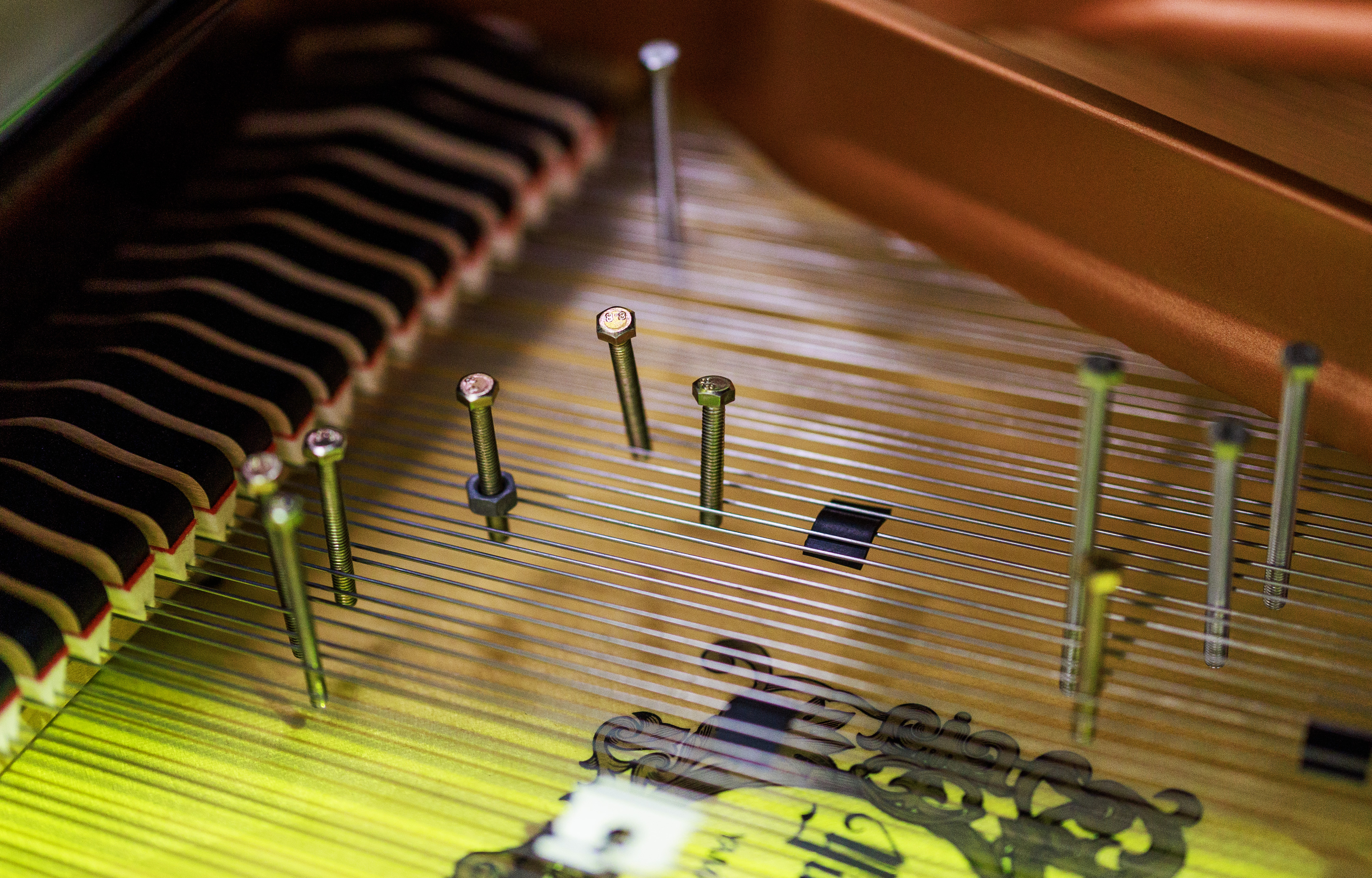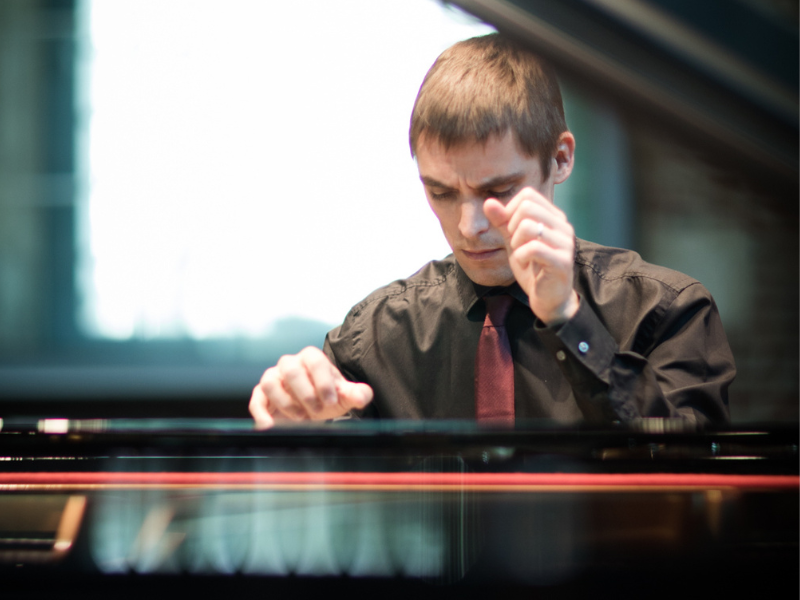Cage lifted the lid of the piano and surrounded its strings with a handful of found objects. He used bolts, screws, rubber, and other items that are not considered to be inherently musical. But everything is musical, when your mind is open – and Cage knew that disrupting the piano’s ordinary mechanisms would open the door to an extraordinary kaleidoscope of colours and textures. This instrument set-up is known as a ‘prepared piano’ – and its effect is percussive, ethereal, and strikingly imperfect.
Matthias Schack-Arnott believes Cage was, in his words, a ‘philosopher of sound’. So when Paul Kildea approached Matthias about bringing a new approach to the Sonatas and Interludes, it was never going to be about changing the ways Cage had stretched the limits of the piano. After all, Matthias feels the 1940s composition ‘is really beautiful and complete’ as it stands. Instead, the new project would be built out of respect for Cage’s philosophy of musical expression – of breaking the rules – and it would see Matthias invent his own way to ‘three-dimensionalise that sound world’ Cage had first created.
The result is The Cage Project, and it features a large sculpture that connects with this piano music from above. As it appears to hover in the air, this sculpture develops its own sonic and visual identity. It spins and glistens while the space is engulfed in the percussive chimes of the prepared piano.
‘I have always had quite a visual way of thinking about sound,’ Matthias says. ‘I like the way, when you play with sound in a spatial way, that it takes on more of a life of its own. It can become something in its own right, rather than just the byproduct of a human manipulating an instrument.’



